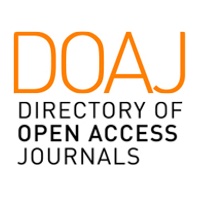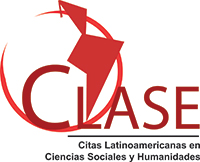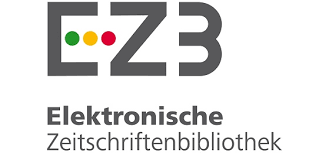Believing and Doubting in Science and Religion
Exploring Attitudes among Mexican Religious ‘Nones’
Abstract
This paper aims to explore the non-religious population (“nones”) in Mexico, with an emphasis on their attitudes toward religion and science. According to the national census in Mexico, the “nones” represent 10.6% of the total population, i.e., 13.3 million individuals (INEGI, 2020). Religion is a central discourse for the unaffiliated identity. When analysing the reasons individuals give to explain their religious disaffiliation, findings in the Mexican context show common attitudes, such as criticism of religion, autonomy, and indifference. The role of science, on the other hand, also frequently appears within the non-religious narrative, especially as a validation of the irreligious position. However, the incorporation of science is neither univocal nor unidirectional. This work elaborates further on some identified attitudes, such as: believing in science, science as a horizontal discourse, and the critique of the scientific realm as a dominant ideology. Following the postulate that individuals cope with social reality using religious and secular positions in different parts of their lives, this paper also suggests that religious and secular discourses, such as science, can coexist and converge in plural identities—especially in a cultural context such as the Mexican, defined by its baroque ethos.
Downloads
References
Ammerman, N. T. (2014). Finding religion in everyday life. Sociology of Religion, 75(2), 189–207.
Bastian, J.-P. (2013). Pluralización religiosa y lógica de mercado en América Latina. In M. A. Cuadriello & M. T. Kuri (Eds.), El fin de un sueño secular: Religión y relaciones internacionales en el cambio de siglo (Primera edición, pp. 91–112). El Colegio de México.
Berger, P. (1999). The Desecularization of the World: A Global Overview. In P. Berger (Ed.), The Desecularization of the World: Resurgent Religion and World Politics (pp. 1–18). Ethics and Public Policy Center.
Berger, P. (2002). Secularization and de-secularization. Religions in the Modern World: Traditions and Transformations, 336.
Berger, P. (2010). Max Weber is alive and well, and living in Guatemala: The Protestant ethic today. The Review of Faith & International Affairs, 8(4), 3–9.
Berger, P. (2014). The Many Altars of Modernity: Toward a Paradigm for Religion in a Pluralist Age. Walter de Gruyter GmbH & Co KG.
Berger, P. (2015). The hospital: On the interface between secularity and religion. Society, 52(5), 410–412.
Blancarte, R. (2001). Laicidad y secularización en México. Estudios Sociológicos, 19(57), 843–855. https://doi.org/10.2307/40420692
Blankholm, J. (2022). The secular paradox: On the religiosity of the not religious (Vol. 5). NYU Press.
Bullivant, S. (2022). Nonverts: The making of ex-Christian America. Oxford University Press.
Casanova, J. (2007). Rethinking secularization: A global comparative perspective. In Religion, globalization, and culture (pp. 101–120). Brill. https://doi.org/10.1163/ej.9789004154070.i-608.39
Casanova, J. (2018). Parallel reformations in Latin America: A critical review of David Martin’s interpretation of the Pentecostal revolution. David Martin and the Sociology of Religion, 85–106.
De Fina, A., Schiffrin, D., & Bamberg, M. (2011). Discourse and identity. Discourse Studies: A Multidisciplinary Introduction, 263(13), 263–282.
De la Torre, R. (2023). Saints and their Replicants: A Decolonization of Power through Ultra-baroque Devotion. In Gurminder K. Bhambra, Lucy Mayblin, Kathryn Medien, & Mara Viveros-Vigoya (Eds.), The SAGE Handbook of Global Social Theory (pp. 315–333). SAGE.
De la Torre, R., Hernández Hernández, A., & Gutiérrez Zúñiga, C. (2016). Encuesta Nacional sobre Creencias y Prácticas Religiosas en México. Rifrem 2016 (1st ed.). Red de Investigadores del Fenómeno Religiosos en México.
De la Torre, R., Nahayeilli Juárez Huet, Mora Duro, C. N., & María del Rosario Ramírez Morales. (2020). Sin religión. In Tomo II. Diversidad religiosa (1a ed., pp. 127–154). Colegio de la Frontera Norte-CIESAS.
Durkheim, E. (1915). The Elementary Forms of the Religious Life (J. W. Swain, Trans.; Ebook). The Project Gutenberg.
Echeverría, B. (2019). Modernity and ‘Whiteness’ (R. Ferreira, Trans.; 1st ed.). Polity Press.
Esquivel, J. C., Funes, M. E., & Prieto, M. S. (2020). Ateos, agnósticos y creyentes sin religión: Análisis cuantitativo de los sin filiación religiosa en la Argentina.
Expansión-CNN. (2015, March 13). El diablo castiga a México porque ahí se apareció la Virgen: Papa. Expansión. http://expansion.mx/nacional/2015/03/13/a-mexico-el-diablo-lo-castiga-con-mucha-bronca-dice-el-papa-francisco
Harrison, P. (2018). Science and secularization. In Narratives of secularization (pp. 47–70). Routledge.
Hervieu-Léger, D. (1993). La religión, hilo de memoria (M. Solana, Trans.). Herder.
INEGI. (2010). Censo de Población y Vivienda 2010. Instituto Nacional de Estadística y Geografía. https://www.inegi.org.mx/programas/ccpv/2010/
INEGI. (2011). Panorama de las religiones en México 2010 (p. 270). Instituto Nacional de Estadística y Geografía. https://perma.cc/26GP-CK7G
INEGI. (2020). Censo de Población y Vivienda 2020. Instituto Nacional de Estadística y Geografía. https://bit.ly/37Pa0cA
INEGI & CONACYT. (2018). Encuesta sobre la Percepción Pública de la Ciencia y la Tecnología (ENPECYT) 2017 (p. 17). Instituto Nacional de Estadística y Geografía y Consejo Nacional de Ciencia y Tecnología. https://www.inegi.org.mx/contenidos/saladeprensa/boletines/2018/OtrTemEcon/ENPECYT2018_06.pdf
Juan Pablo II. (1979, January 26). 26 de enero de 1979, Catedral de Ciudad de México. Vatican. https://www.vatican.va/content/john-paul-ii/es/homilies/1979/documents/hf_jp-ii_hom_19790126_messico-cattedrale.html
Karpov, V. (2010). Desecularization: A conceptual framework. Journal of Church and State, 52(2), 232–270.
Konferenz Weltkirche. (2017). Die Jungfrau von Guadalupe. Konferenz Weltkirche. https://weltkirche.katholisch.de/artikel/40880-die-jungfrau-von-guadalupe
Kuru, A. T. (2009). Secularism and state policies toward religion: The United States, France, and Turkey (1st ed.). Cambridge University Press.
Lafaye, J. (2015). Quetzalcóatl y Guadalupe: La formación de la conciencia nacional en México. Abismo de conceptos. Identidad, nación, mexicano. Fondo de cultura económica.
Latinobarómetro. (2017). El papa Francisco y la religión en Chile y América Latina. Latinobarómetro 1995-2017 (p. 28). Latinobarómetro. https://bit.ly/3KdrwUZ
Lecaros, V., & Barrera, P. (2017). Dossier: Los ‘Sin Religión’ en la Modernidad Contemporánea. Estudos de Religião, 31(3), 5–7.
Lipka, M. (2019, July 1). 5 facts about religion in Canada. Pew Research Center. https://www.pewresearch.org/fact-tank/2019/07/01/5-facts-about-religion-in-canada/
Lorenzano, S. (2016, December 11). Guadalupana, ¿cómo de que no? SinEmbargo MX. https://www.sinembargo.mx/11-12-2016/3124496
Luckmann, T. (1967). The invisible religion: The problem of religion in modern society. Taylor & Francis.
@Marx_ilustrado. (2022, December 12). Marxismo Ilustrado en Twitter [Xcorp. San Francisco, EUA]. Twitter. https://twitter.com/Marx_ilustrado/status/1602340044143992833
Mora Duro, C. N. (2017a). Entre la crítica, la autonomía y la indiferencia: La población sin religión en México. Estudos de Religião, 31(3), 157–178.
Mora Duro, C. N. (2017b). Creer sin iglesia y practicar sin Dios: Población sin religión en el contexto urbano y rural de México en los albores del Siglo XXI [Doctoral Dissertation, El Colegio de México]. https://bit.ly/3OjKwmt
Mora Duro, C. N. (2018). Población sin religión. In Diccionario de religiones en América Latina (1a ed., pp. 475–485). Fondo de Cultura Económica.
Mora Duro, C. N. (2021). ¿Quiénes son los ‘sin religión’ en la Ciudad de México? In Formas de creer en la ciudad (1st ed., pp. 223–259). IIS-UNAM.
Mora Duro, C. N. (2024). Desecularisation of the State and Sacred Secularism: Politics and Religion in Mexico within the Latin-American Context. Working Paper Series of the CASHSS “Multiple Secularities – Beyond the West, Beyond Modernities”, 28, 64.
Mora Duro, C. N., & Fitz Herbert, A. (2024). Atheist Thanks to God: Exploring the Secular Paradox among Latin American ‘Nones’. Secular Studies, 6(2), 164–191.
Navarro Floria, J. G. (2004). VV. AA., Foro Internacional sobre Libertad Religiosa. Anuario de Derecho Eclesiástico, 624–628.
Pew Research Center. (2014). Religion in Latin America. Widespread Change in a Historically Catholic Region (p. 310). Pew Research Center’s Religion & Public Life Project. http://pewrsr.ch/1BaP6g0
Pew Research Center. (2022, September 13). 1. How U.S. religious composition has changed in recent decades. Pew Research Center’s Religion & Public Life Project. https://www.pewresearch.org/religion/2022/09/13/how-u-s-religious-composition-has-changed-in-recent-decades/
Rabbia, H. (2017). Explorando los “sin religión de pertenencia” en Córdoba, Argentina. Estudos de Religião, 31(3), 131–155.
Rodrigues, D. (2007). Religiosos Sem Igreja: Um Mergulho na Categoria Censitária dos Sem Religião. Revista de Estudos da Religião, 31–56.
Rodrigues, D. (2009, July). Sem religião: Uma categoria censitária entre a secularização e a dessecularização. GT 12 O fenômeno Religioso. XIV Congresso Brasileiro de Sociologia, Rio de Janeiro, Brasil.
Rodrigues, D. (2012). Os sem religião nos censos brasileiros: Sinal de uma crise do pertencimento institucional. The without religion in Brazilian census: Sign of a crisis of affiliation. Horizonte, 10(28), 1130–1153. https://doi.org/10.5752/P.2175-5841.2012v10n28p1130
Romero, C., & Lecaros, V. (2017). Quiénes son los ‘sin religión’en Lima. Estudos de Religião, 31(3), 111–130.
Salazar, P., Barrera, P., & Espino, S. (2015). Estado Laico en un país religioso. Encuesta Nacional de Religión, Secularización y Laicidad (Los Mexicanos Vistos Por Sí Mismos. Los Grandes Temas Nacionales, p. 230). Universidad Nacional Autónoma de México - Instituto de Investigaciones Jurídicas.
Smith, G. A., Tevington, P., Nortey, J., Rotolo, M., Kallo, A., & Alper, B. A. (2024). Religious ‘Nones’ in America: Who they are and what they believe. Pew Research Center. https://www.pewresearch.org/religion/2024/01/24/religious-nones-in-america-who-they-are-and-what-they-believe/
Copyright (c) 2025 Carlos Nazario Mora Duro

This work is licensed under a Creative Commons Attribution-NonCommercial-ShareAlike 4.0 International License.
The authors retain the copyright and guarantee the journal the right to be the first publication of the work. In case that a translation of the article already published in Austral Comunicación can be published in another journal, it is requested to record the original publication in the translated version.
The license used is CC BY-NC-SA, which allows sharing (copying and redistributing the material in any medium and format) and adapting (remixing, transforming and building on the material) under the following terms: attribution (acknowledge authorship) and non-commercial (the material cannot be used for commercial purposes). Update: February 1, 2022.
Austral Comunicación allows the author (s) to retain the publication rights without restrictions.











































